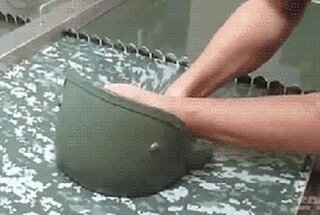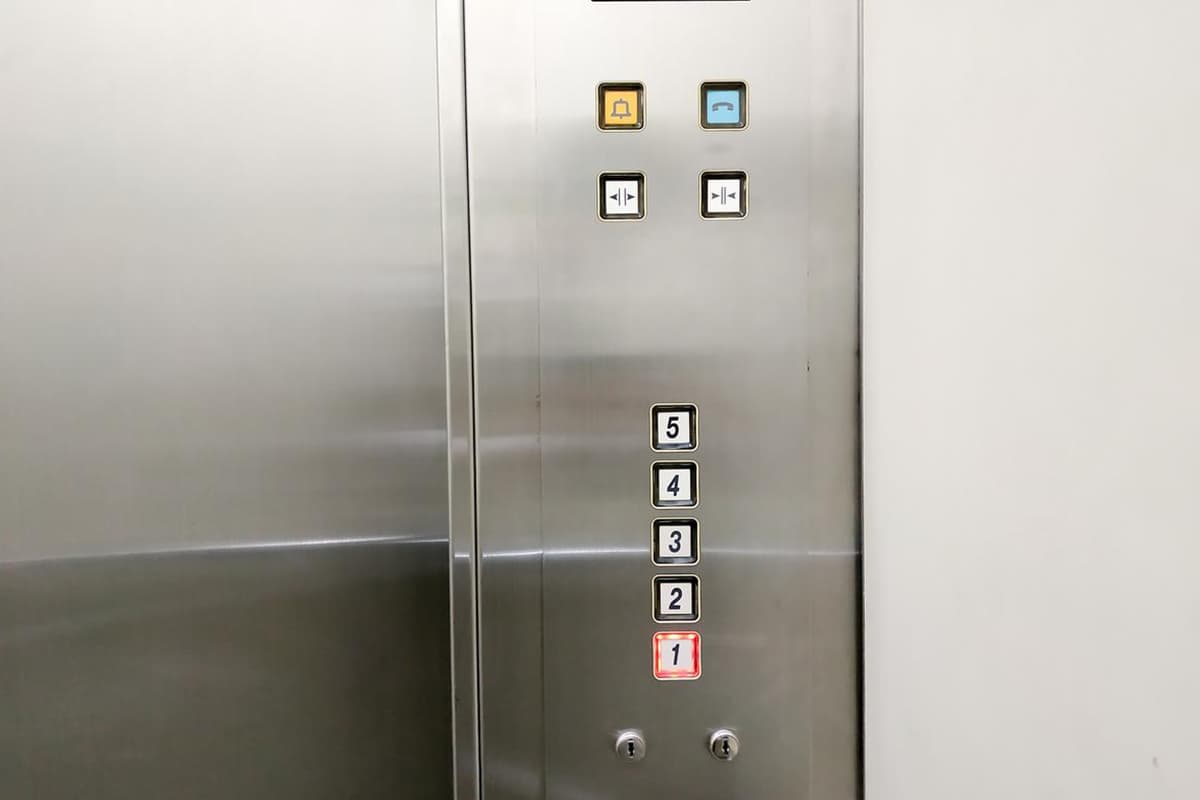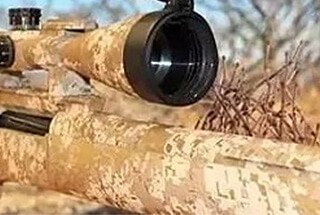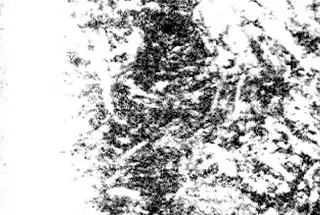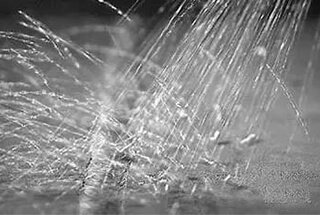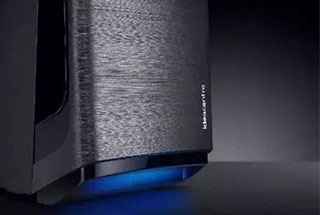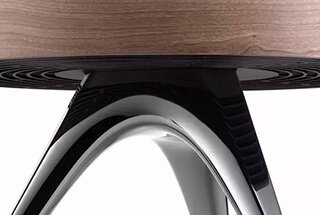
How can a mold achieve a mirror-like finish? Polishing is not just about aesthetics; it’s essential for durability and efficient production. This article explores six key methods of mold polishing, from mechanical and chemical to ultrasonic and magnetic techniques. Readers will discover how each method enhances surface quality and learn the basic procedures for achieving flawless finishes. Dive in to find out how to elevate your mold polishing game and ensure superior results in your manufacturing processes.
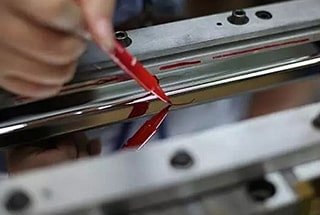
Polishing enhances not only the appearance of the workpiece, but also its resistance to corrosion and abrasion on the material surface.
Additionally, it can provide additional benefits to plastic molds, such as making it easier to remove the finished product and reducing the production cycle time. As a result, polishing is a crucial step in the production of plastic molds.
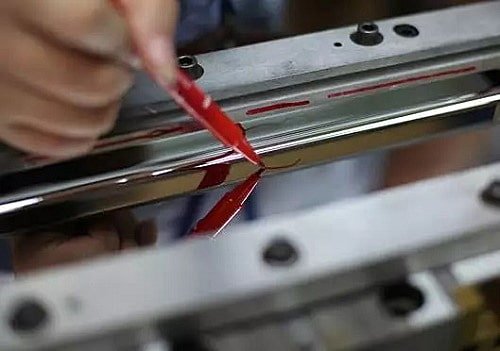
At present, the following 6 polishing methods are commonly used:
Mechanical polishing is a precision surface finishing technique that involves the controlled removal of material from a workpiece to achieve a smooth, high-quality surface. This process utilizes abrasive particles to cut, grind, and polish the surface, progressively reducing surface roughness and enhancing the overall finish.
Traditional mechanical polishing methods often employ manual techniques with tools such as whetstones, wool wheels, and abrasive papers of varying grit sizes. These methods are effective for general surface improvement but may lack the precision required for more demanding applications.
For specialized components, particularly those with rotating surfaces, advanced polishing setups incorporate auxiliary tools like precision-controlled turntables. These systems ensure uniform material removal and consistent surface quality across curved or cylindrical workpieces.
When ultra-high surface quality is required, such as in the production of optical components or precision molds, ultra-precise grinding polishing techniques are employed. This advanced method utilizes specially designed grinding tools in conjunction with a carefully formulated polishing slurry containing fine abrasive particles. The workpiece is subjected to controlled pressure and high-speed rotation within this abrasive medium, allowing for nanometer-scale material removal.
The ultra-precise grinding polishing process can achieve remarkable surface finishes, with roughness values as low as Ra 0.008 μm (8 nanometers). This level of surface quality is among the highest attainable through mechanical polishing methods and is particularly crucial for applications such as optical lens molds, where surface imperfections can significantly impact performance.
Key factors influencing the effectiveness of mechanical polishing include:
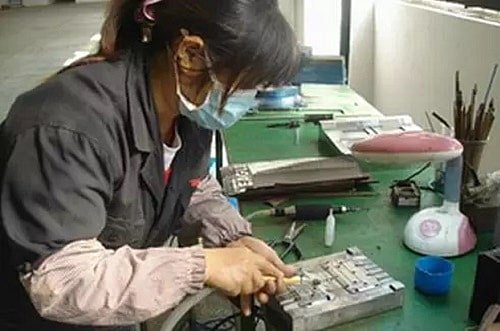
Chemical polishing, also known as electropolishing or electrolytic polishing, is a surface finishing process that selectively dissolves microscopic protrusions on the material surface through controlled chemical reactions. This process preferentially etches raised areas compared to recessed regions, resulting in a smooth, uniform surface finish.
The primary advantages of chemical polishing include:
While chemical polishing offers numerous benefits, the main challenge lies in the precise formulation and control of the polishing solution. Factors such as solution composition, temperature, agitation, and immersion time must be carefully optimized for each specific material and desired finish.
The effectiveness of chemical polishing varies depending on the material and process parameters. Typically, this method can achieve surface roughness values in the range of 0.1 to 1.0 μm Ra (arithmetic average roughness). For more demanding applications, a combination of chemical polishing and other finishing techniques may be employed to achieve ultra-smooth surfaces with roughness values below 0.1 μm Ra.
Electrolytic polishing, also known as electropolishing, is an advanced surface finishing technique that operates on principles similar to chemical polishing. The process achieves surface smoothing through the selective dissolution of material, particularly from microscopic protrusions on the workpiece surface. However, electrolytic polishing offers superior results compared to chemical polishing by eliminating the detrimental effects of cathode reactions.
The electrochemical polishing process can be divided into two distinct phases:
(1) Macro polishing:
In this initial stage, the dissolved material diffuses into the electrolyte solution. This process primarily targets larger surface irregularities, effectively reducing the overall surface roughness. During macro polishing, the average roughness (Ra) typically decreases to values greater than 1 μm.
(2) Micro polishing:
The second phase involves anodic polarization of the workpiece surface. This step focuses on refining the surface at a microscopic level, significantly enhancing surface brightness and luster. The micro polishing stage can achieve exceptionally smooth surfaces with an average roughness (Ra) less than 1 μm.
The electrolytic polishing process offers several advantages over traditional mechanical polishing methods:
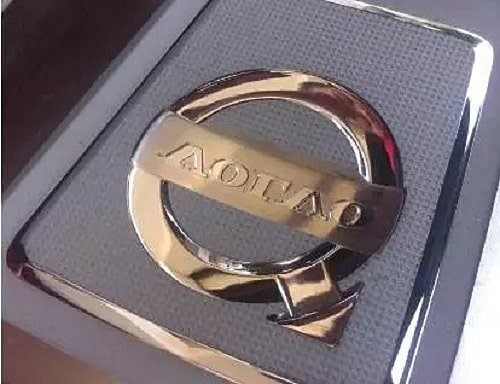
Ultrasonic polishing is an advanced surface finishing technique that leverages high-frequency sound waves to achieve superior surface quality. In this process, the workpiece is immersed in an abrasive slurry and subjected to an ultrasonic field. The ultrasonic vibrations induce cavitation and acoustic streaming, causing the abrasive particles to impinge on the workpiece surface with high frequency and low amplitude, resulting in micro-erosion and polishing.
This method offers several advantages over conventional polishing techniques:
However, the process has some limitations:
Ultrasonic processing can be synergistically combined with chemical or electrochemical methods to enhance surface finishing capabilities:
Fluid polishing is an advanced surface finishing process that utilizes a high-velocity liquid stream containing suspended abrasive particles to achieve precision surface modification. This technique leverages the principles of fluid dynamics and abrasive wear to produce superior surface finishes on a wide range of materials, including metals, ceramics, and composites.
The primary methods of fluid polishing include:
Hydrodynamic grinding, a subset of fluid polishing, employs hydraulic pressure to propel a specially formulated abrasive medium across the workpiece surface in a controlled, oscillatory manner. This process is particularly effective for complex geometries and internal passages that are difficult to access with conventional polishing methods.
The polishing medium typically consists of:
The composition of the medium is tailored to the specific application, considering factors such as:
Key process parameters that influence the effectiveness of fluid polishing include:
Fluid polishing offers several advantages over traditional mechanical polishing methods:
Magnetic abrasive finishing (MAF) is an advanced surface finishing technique that employs magnetic abrasives to form flexible brushes under a controlled magnetic field for precision polishing of workpieces. This method offers several advantages, including high processing efficiency, superior surface quality, precise control over processing parameters, and improved working conditions. When optimized with suitable abrasive materials and process parameters, MAF can achieve surface roughness values as low as Ra 0.1μm.
In plastic mold manufacturing, the polishing requirements differ significantly from conventional surface polishing in other industries. Mold polishing, more accurately termed “mirror finishing,” demands not only exceptional surface smoothness but also stringent control over surface flatness and geometric accuracy. This contrasts with general surface polishing, which primarily aims to achieve a visually appealing, shiny surface.
Mirror finishing standards are typically classified into four levels of increasing precision:
While MAF and other non-contact polishing methods like electrolytic polishing, fluid polishing, chemical polishing, and ultrasonic polishing offer certain advantages, they often face challenges in precisely controlling the geometric accuracy of complex mold surfaces. Additionally, the surface quality achieved by these methods may not consistently meet the stringent requirements of high-precision molds. Consequently, mechanical polishing techniques remain the primary approach for achieving mirror-like finishes on precision molds.
Mechanical polishing for molds typically involves a multi-stage process, progressing from coarse to fine abrasives, often culminating in the use of diamond compounds or specialized polishing pastes. This method allows for better control over material removal rates and surface geometry, crucial for maintaining the dimensional accuracy of mold cavities and core components. Advanced CNC polishing machines and robotic systems are increasingly employed to enhance consistency and reduce manual labor in the mold polishing process.
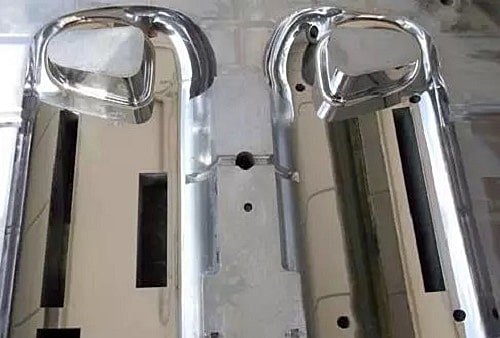
To achieve high-quality polishing results, it is essential to utilize premium polishing tools and consumables, including whetstones, abrasive papers, and diamond compounds. The selection of the polishing method is contingent upon the surface condition following previous manufacturing processes, such as machining, electrical discharge machining (EDM), grinding, and other operations.
The general process of mechanical polishing typically follows these steps:
After initial processing (e.g., milling, EDM, grinding), the surface undergoes preliminary polishing using either a rotary surface polisher or an ultrasonic grinding machine operating at 35,000-40,000 RPM. A common approach involves removing the recast layer (white layer) resulting from EDM using a 3mm diameter wheel with aluminum oxide (WA) #400 abrasive.
Subsequently, manual whetstone grinding is performed using oil stones with kerosene as a lubricant and coolant. The typical grit progression is #180, #240, #320, #400, #600, #800, and #1000. However, to optimize efficiency, many experienced mold makers initiate the process with #400 grit.
This stage primarily employs abrasive papers in conjunction with kerosene as a lubricant. The abrasive paper sequence typically includes grits #400, #600, #800, #1000, #1200, and #1500. It is crucial to note that #1500 grit paper is suitable only for hardened mold steels (above 52 HRC) and should be avoided on pre-hardened steels to prevent surface burning.
Diamond compounds are the primary abrasives used in fine polishing. When utilizing a polishing cloth wheel in combination with diamond abrasives, the typical progression is 9μm (#1800) to 6μm (#3000) to 3μm (#8000). The 9μm diamond compound effectively removes the fine scratches left by #1200 and #1500 abrasive papers.
Further refinement is achieved using a felt pad with progressively finer diamond compounds, starting with 1μm (#14000), followed by 0.5μm (#60000), and concluding with 0.25μm (#100000). Polishing operations requiring 1μm accuracy or finer should be conducted in a controlled clean room environment within the mold processing facility to prevent contamination that could compromise hours of meticulous work.
For ultra-precision polishing, an exceptionally clean environment is imperative, as even minute particles of dust, smoke, skin cells, or saliva can adversely affect the final surface quality.
Throughout the polishing process, it is essential to maintain consistent pressure, adhere to proper technique, and regularly inspect the surface to ensure uniform material removal and the desired finish. Additionally, thorough cleaning between each polishing step is crucial to prevent cross-contamination of abrasives and achieve optimal results.
Pay attention to the following points when polishing with abrasive papers:
1) Abrasive paper polishing requires appropriate backing materials. For curved or spherical surfaces, cork rods are preferable as they conform to the surface contours. Harder materials like cherry wood are better suited for flat surfaces. The ends of backing materials should be shaped to match the steel surface profile, preventing deep scratches from sharp edges.
2) When transitioning between abrasive grades, alter the polishing direction by 45° to 90° to distinguish between previous and current abrasion patterns. Before changing grades, meticulously clean the surface using a lint-free cloth moistened with a suitable solvent, such as isopropyl alcohol. Any residual particles can compromise the entire polishing process. This cleaning step is crucial when progressing from abrasive paper to diamond compound polishing, ensuring complete removal of all particles and lubricants.
3) Exercise extreme caution when using fine-grit abrasives (e.g., P1200 and P1500). Apply minimal pressure and employ a two-step polishing method. For each abrasive grade, perform two rotations in different directions between 45° and 90° to achieve optimal results.
Consider the following when diamond grinding and polishing:
Apply minimal pressure, especially on pre-hardened steel components and when using fine diamond compounds. The recommended load for polishing with 8000-grit paste is 100-200 g/cm², though maintaining consistent pressure can be challenging. To improve control, modify the backing material by adding a narrow handle or partially cutting a bamboo rod to increase flexibility. This aids in maintaining appropriate polishing pressure and prevents localized high-pressure areas.
Cleanliness is paramount in diamond polishing. Ensure both the workpiece surface and the operator’s hands are thoroughly cleaned. Keep polishing sessions brief, as shorter durations typically yield superior results. Prolonged polishing can lead to surface defects such as “orange peel” texture and pitting. To achieve high-quality finishes, avoid heat-generating methods like rotary polishing wheels, which can easily cause “orange peel” effects due to localized heating.
Upon completion of the polishing process, thoroughly clean the workpiece surface to remove all abrasives and lubricants. Apply a corrosion-inhibiting coating to protect the polished surface. Polishing quality primarily depends on technique, which is largely a manual skill. Other influencing factors include the mold material properties, initial surface condition, and heat treatment processes.
High-quality steel is essential for achieving excellent polishing results. Inconsistent surface hardness or varying material characteristics can significantly complicate the polishing process. The presence of inclusions and porosity in the steel also poses challenges to achieving a high-quality polish.
Material hardness significantly impacts the polishing process, affecting both the efficiency and quality of the final surface finish. As hardness increases, the abrasive removal rate decreases, making the initial grinding stage more challenging and time-consuming. However, this increased resistance to material removal ultimately contributes to a superior surface finish after polishing.
The correlation between hardness and polishing time is directly proportional. Higher hardness materials require extended polishing durations to achieve the desired lower surface roughness. This prolonged process is necessary to overcome the material’s resistance to deformation and to gradually refine the surface topography.
An important advantage of polishing harder materials is the reduced risk of over-polishing. The inherent resistance to material removal provides a wider processing window, allowing for more precise control over the final surface characteristics. This attribute is particularly valuable in applications requiring tight dimensional tolerances or specific surface properties.
To optimize the polishing process for materials of varying hardness:
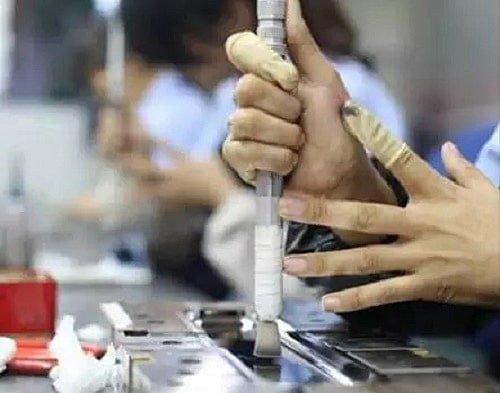
The surface condition of a steel workpiece significantly impacts the polishing process and final quality. Various machining operations can alter the surface characteristics, affecting subsequent polishing efficiency and outcomes.
During steel machining, surface integrity can be compromised due to thermal effects, residual stresses, or mechanical deformation during cutting or forming processes. Suboptimal cutting parameters, such as excessive feed rates or inadequate cooling, can lead to surface defects like micro-cracks, work hardening, or built-up edge formation, all of which negatively influence polishing results.
Surfaces produced by electrical discharge machining (EDM) present unique challenges for polishing compared to conventionally machined or heat-treated surfaces. EDM generates a recast layer with altered metallurgical properties, including increased hardness and potential micro-cracks. To mitigate these issues, precision EDM trimming with optimized parameters should be employed as a finishing step. This approach minimizes the formation of the problematic recast layer and reduces surface roughness prior to polishing.
Inadequate EDM finishing can result in a heat-affected zone (HAZ) extending up to 0.4mm below the surface. This layer typically exhibits higher hardness than the base material due to rapid heating and cooling cycles. Complete removal of this altered layer is crucial for achieving high-quality polished surfaces.
To optimize polishing outcomes, it is recommended to implement a multi-step surface preparation strategy:
By systematically addressing the initial surface condition and employing a well-designed polishing sequence, manufacturers can consistently achieve superior surface quality on steel components, regardless of the prior machining processes employed.

